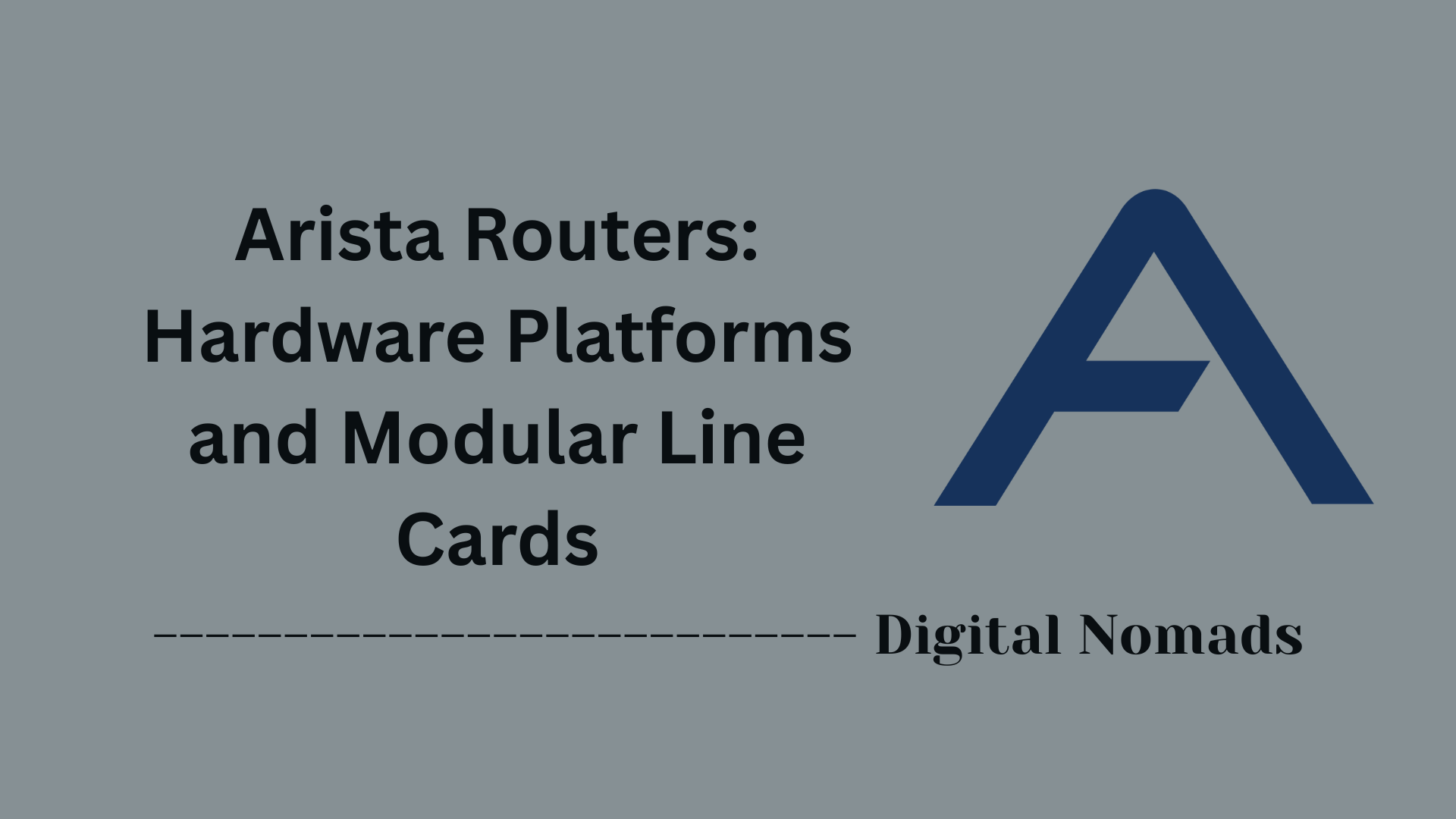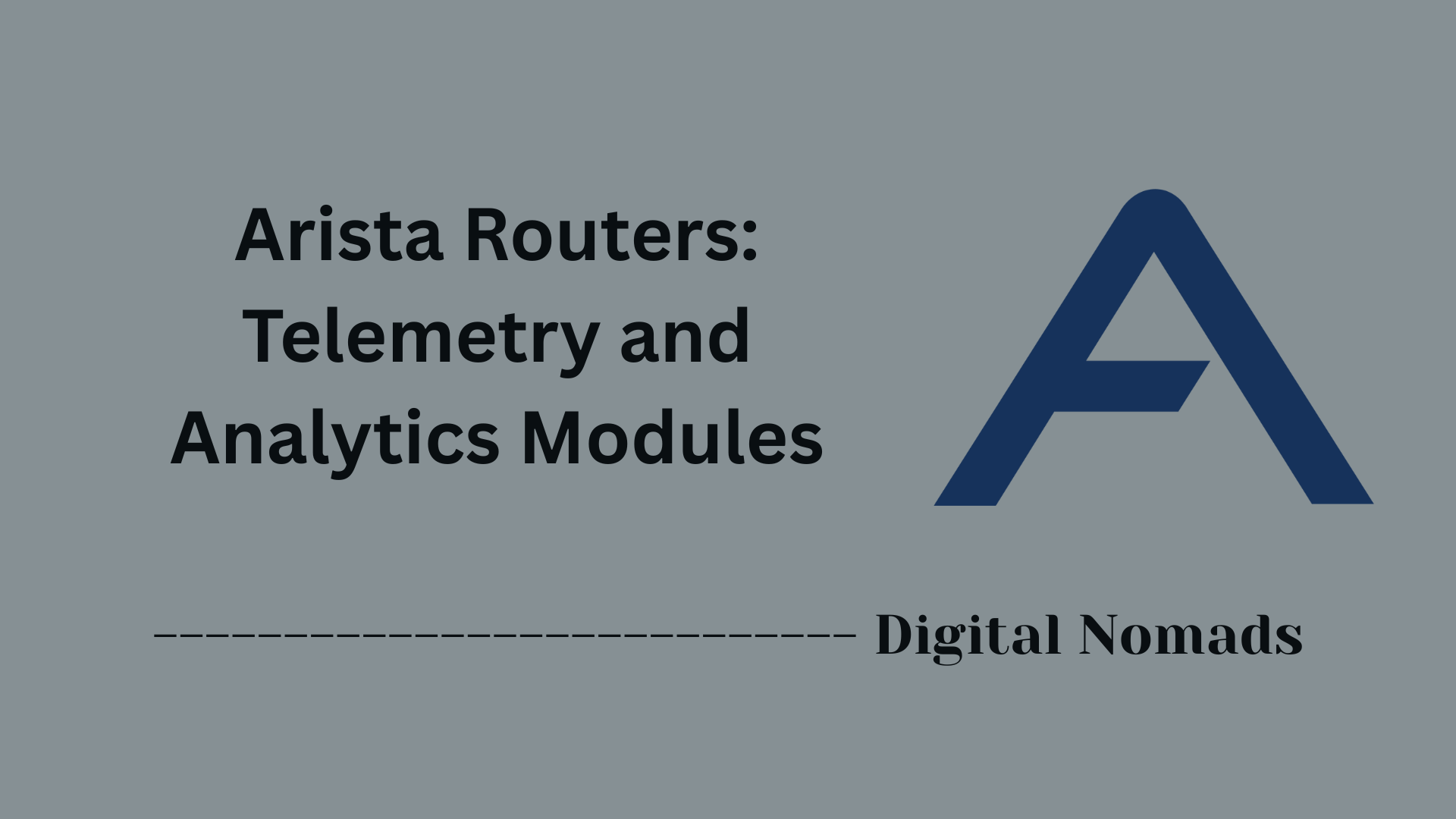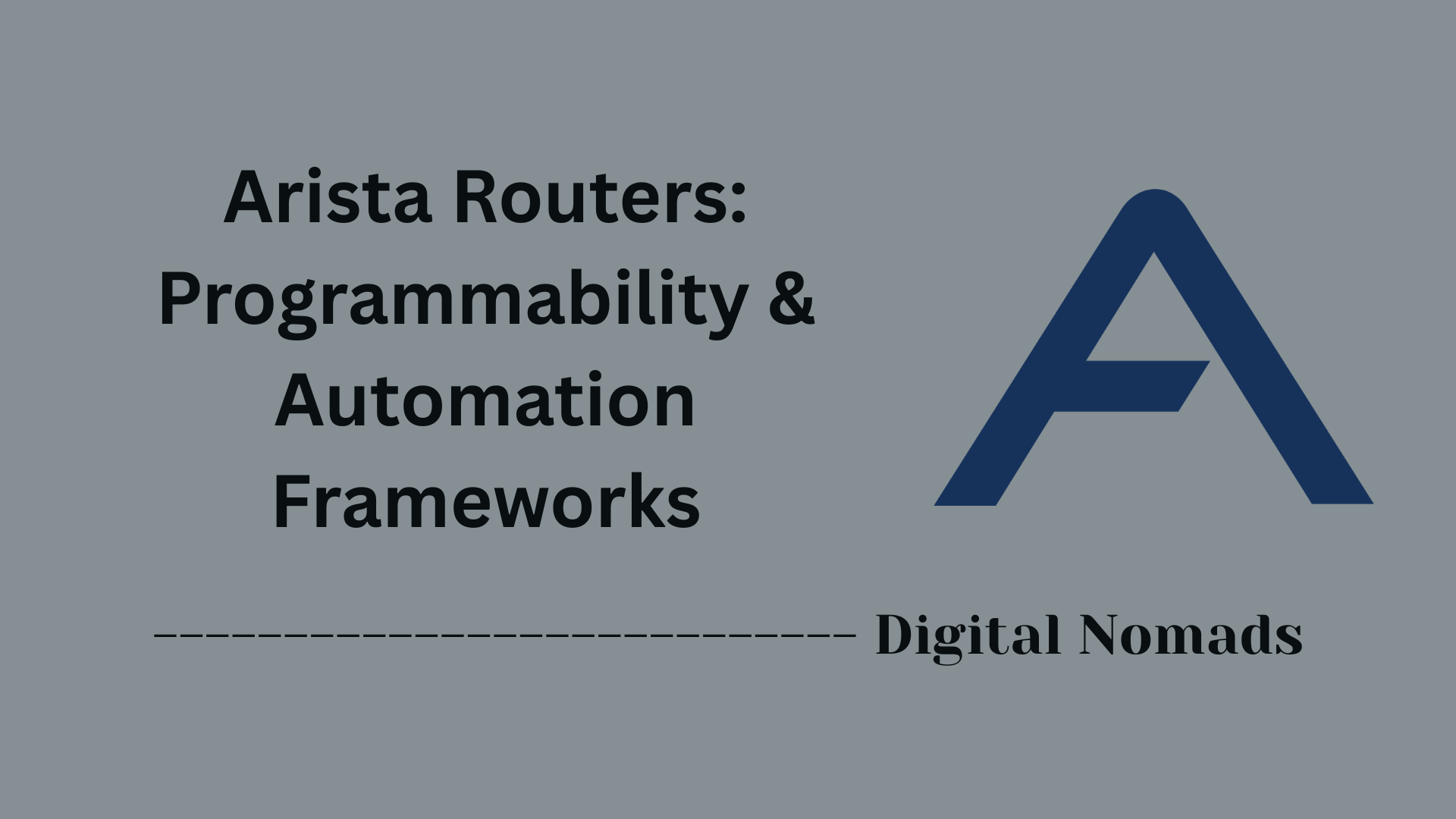Table of Contents
- Overview
- Model Comparison Table
- Key Features Across 7000 Series
- Supported Protocols & Technologies
- Notable Software Capabilities
- Environmental and Compliance Information
- Conclusion
Overview of Arista 7000 Series Switches
What Are Arista 7000 Series Switches?
The Arista 7000 Series comprises a family of high-performance network switches built for modern enterprise and data center environments. These switches support both traditional Ethernet and advanced network protocols, enabling the fast and reliable movement of large amounts of data. Characterized by their modular architecture, extensive feature set, and scalability, Arista 7000 Series switches are commonly found in the core, spine, and edge layers of large networks.
Why You Need to Know About Arista 7000 Series
- Modern Data Center Demands: Enterprises today require networks with high throughput, low latency, and the flexibility to support virtualization, cloud computing, and automation. The 7000 Series is engineered to meet these demands, making it essential knowledge for network architects, administrators, and IT leaders.
- Scalability & Performance: With offerings ranging from compact access switches to modular core chassis supporting hundreds of high-speed ports, organizations can scale their networks as needs grow without compromising speed or reliability.
- Advanced Features: The series supports a rich set of protocols, network automation, real-time telemetry, and integrated security. These capabilities are crucial for managing complex multi-tenant environments and ensuring continuous uptime.
- Industry Adoption: Arista switches are widely deployed by major cloud providers, financial institutions, and enterprises, making familiarity with them valuable for IT professionals and organizations involved in infrastructure design, operations, or managed services.
How Arista 7000 Series Switches Work
- Hardware Architecture: The switches feature high-density port configurations with support for 1GbE, 10GbE, 25GbE, 40GbE, 100GbE, and up to 400GbE speeds. Models are available in both fixed and modular designs, allowing deployment flexibility across various network layers.
- Arista EOS (Extensible Operating System): All 7000 Series switches run a single, modular software image known as EOS. EOS provides a consistent operational experience, simplifies upgrades, and enables advanced automation through APIs and scripting.
- Switching and Routing: Core switching functions include robust Layer 2/Layer 3 forwarding, support for modern data center technologies (VXLAN, EVPN, MLAG), and interoperability with legacy networks.
- Management & Automation: The switches support open management frameworks and protocols that make integration with orchestration tools and centralized management platforms like Arista CloudVision straightforward.
- Reliability and Redundancy: Features such as hot-swappable components, redundant power, and advanced failover logic ensure minimal downtime and robust operation in mission-critical environments.
Arista 7000 Series switches serve as the backbone of digital infrastructure, offering the performance, flexibility, and intelligence needed to support current and future networking requirements.
Model Comparison Table
The Arista 7000 Series offers a range of switch models designed to meet various networking needs from campus edge to large data center core deployments. Below is a comparison of key models in the series.
| Model | Ports | Throughput | Power Consumption | Typical Use Case |
|---|---|---|---|---|
| 7010T | 48 x 1GbE + 4 x 10GbE | 176 Gbps | ~65W | Campus/Edge Switch |
| 7050QX-32S | 32 x 40GbE | 2.56 Tbps | ~480W | Data Center Spine/Leaf |
| 7060CX-32S | 32 x 100GbE | 6.4 Tbps | ~950W | High-performance Data Center Core |
| 7280SR-48C6 | 48 x 25GbE + 6 x 100GbE | 3.6 Tbps | ~650W | Top-of-Rack/Storage |
| 7500R3 Series | Modular, Up to 576 x 400GbE | Up to 230 Tbps | Chassis-based | Large Enterprise/Core |
Note: Specifications may vary by hardware revision and software version. Consult official Arista documentation for the latest details.
Key Features Across 7000 Series
The Arista 7000 Series switches incorporate a rich set of features designed to deliver high performance, flexibility, and advanced network capabilities. Here are the key features common across models in the series:
- Low-Latency Architecture: Engineered to provide ultra-low latency suitable for cloud and hyperscale data center environments, ensuring minimal delay in data forwarding.
- Extensible Operating System (EOS): A single, modular software image across all models simplifies management, enhances stability, and supports advanced automation and programmability.
- Virtualization Support: Comprehensive support for VXLAN, EVPN, and other overlay protocols enables network segmentation and multi-tenant environments.
- High Availability: Features such as redundant power supplies, hot-swappable fans, and field-replaceable modules minimize downtime and improve reliability.
- Telemetry and Analytics: Real-time streaming telemetry delivers granular visibility and analytics, assisting in performance monitoring and rapid troubleshooting.
- Programmability: Open APIs, including REST, gRPC, and Python scripting, allow seamless integration with automation frameworks and custom workflows.
Supported Protocols & Technologies
The Arista 7000 Series switches support a comprehensive range of networking protocols and technologies designed for both data center and enterprise environments. Below is a categorized overview of notable supported protocols and technology features:
-
Layer 2 Protocols:
- Spanning Tree Protocols (STP, RSTP, MSTP, Rapid-PVST)
- VLAN (IEEE 802.1Q)
- Link Aggregation (LACP - IEEE 802.3ad, MLAG for multi-chassis link aggregation)
- LLDP (Link Layer Discovery Protocol)
- Private VLANs, Q-in-Q (VLAN stacking)
-
Layer 3 Protocols:
- OSPF (Open Shortest Path First) for IPv4/IPv6
- BGP (Border Gateway Protocol v4/v4+)
- RIP (Routing Information Protocol)
- VRRP (Virtual Router Redundancy Protocol), VARP
- Multicast: PIM (SM/DM/SSM), IGMP snooping
- ECMP (Equal-Cost Multi-Path Routing)
-
Data Center & Virtualization:
- VXLAN (Virtual Extensible LAN) and EVPN (Ethernet VPN) for network virtualization and segmentation
- Data Center Bridging (DCB)
- MLAG (Multi-chassis Link Aggregation)
- Overlay technologies and support for automation (OpenConfig, NETCONF/YANG, gNMI)
-
Timing & Synchronization:
- Precision Time Protocol (PTP - IEEE 1588)
- Network Time Protocol (NTP)
-
Security & Access:
- Access Control Lists (ACLs: IPv4 & IPv6, ingress & egress)
- 802.1X Network Access Control
- DHCP Snooping, IP Source Guard, MAC Security
- AAA (Authentication, Authorization, Accounting)
-
Monitoring & Management:
- SNMP (Simple Network Management Protocol)
- sFlow, NetFlow
- Zero Touch Provisioning (ZTP)
- CloudVision integration, event-driven telemetry, streaming analytics
Note: Protocol availability and feature support may differ depending on the exact 7000 Series model and EOS software version. Review official documentation for detailed compatibility.
Notable Software Capabilities
The Arista 7000 Series switches run on Arista’s Extensible Operating System (EOS), which offers several advanced software features that enhance network flexibility, automation, and reliability.
- Arista EOS Extensions: A modular and programmable architecture supporting custom scripts and applications using Python, C APIs, and eAPI. This enables network operators to tailor functionality and automate tasks efficiently.
- CloudVision Integration: Centralized network management platform providing unified visibility, workflow automation, and telemetry analytics across deployed switches, reducing operational complexity.
- Zero-Touch Provisioning (ZTP): Automated provisioning capability that allows new switches to be deployed with minimal manual configuration, accelerating network scaling and reducing setup errors.
- Event-Driven Automation: EOS supports triggers and event monitoring to automate remediation, notifications, or configuration changes based on network events, enhancing operational responsiveness.
- Advanced Telemetry: Streaming telemetry collects real-time performance and health data, enabling proactive monitoring and faster troubleshooting with less impact on network resources.
- Open APIs & Standards: Support for REST, gRPC, NETCONF, and other standard APIs facilitate seamless integration with third-party automation and orchestration tools.
Environmental and Compliance Information
The Arista 7000 Series switches are engineered to meet both operational efficiency and regulatory compliance requirements for today’s enterprise and data center environments. Below is an overview of their environmental specifications and regulatory standards:
-
Operating Temperature Range:
- 0°C to 40°C (32°F to 104°F) for most fixed-configuration models
- Variable range for modular chassis (refer to model-specific documentation)
-
Power Supply:
- Integrated or modular AC and DC options
- Energy-efficient hardware compliant with industry standards
-
Cooling:
- Front-to-back and back-to-front airflow configurations
- Hot-swappable, redundant fan modules available
-
Environmental Compliance:
- RoHS (Restriction of Hazardous Substances)
- WEEE (Waste Electrical and Electronic Equipment)
- REACH (Registration, Evaluation, Authorization, and Restriction of Chemicals)
-
Certifications & Standards (sample selection):
- UL, CSA, IEC, EN safety listings
- FCC, CE, VCCI electromagnetic compliance
- ISO 9001/14001 for manufacturing quality/environmental management
Note: Specifications and compliance may vary depending on the exact model and region. Always refer to official Arista documentation for detailed, model-specific environmental and compliance data.
Conclusion
In this blog post, we've explored the Arista 7000 Series switches — a powerful and versatile family of networking devices designed to meet the demands of today’s enterprise and data center environments. We learned how these switches combine high performance, scalability, and advanced software capabilities through Arista’s EOS to create reliable, low-latency, and highly programmable networks.
Key takeaways include:
- The variety of models in the 7000 Series allows organizations to tailor their network architecture with options that suit everything from campus edge deployments to hyperscale data center cores.
- The impressive set of supported protocols and technologies ensures seamless interoperability and enables advanced features like network virtualization, enhanced security, and automated management.
- Arista’s extensible and programmable EOS software empowers network operators with tools for automation, advanced telemetry, and centralized management, helping to simplify operations and improve visibility.
- Environmental design and compliance standards guarantee that these switches operate efficiently and meet industry regulations worldwide.
Whether you’re designing a new network infrastructure or upgrading an existing one, understanding the capabilities of Arista 7000 Series switches positions you to make informed decisions that support both current needs and future growth.
Thanks for reading! If you have questions or want to learn more about deploying Arista switches in your environment, feel free to reach out or explore additional resources. Happy networking!




